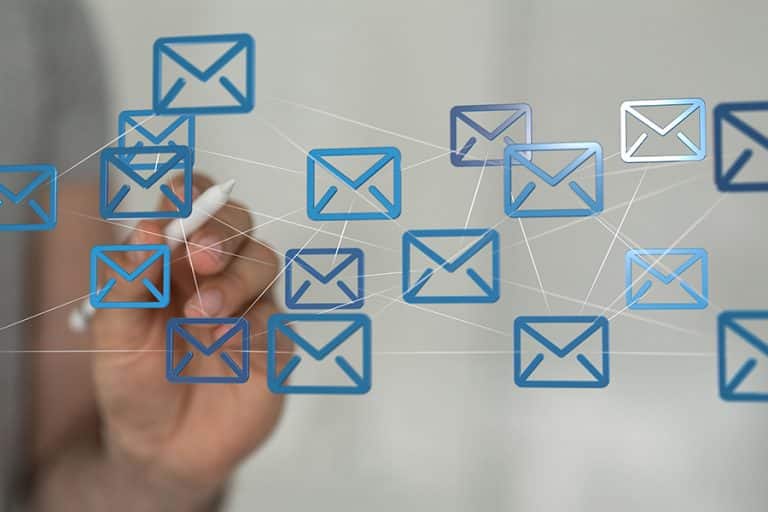
This article is written by Jordi Griffioen, COO at RapidSugar, one of this year’s sponsors of the DDMA Email Marketing Automation Summit. Tickets are available at: emas.nu.
What is Interactive Email Marketing?
Interactive emails use elements like tabs, accordions, and sliders that recipients can actively engage with within the email itself. This type of email resembles a small, interactive website. Users can hover over items, click, and scroll without leaving the email. This not only increases engagement but also the likelihood of conversion.
3 Benefits of Interactive Email Marketing:
- Enhanced Experience and Engagement: By offering recipients interactive content, they stay longer within the email. The dynamic elements pique curiosity and encourage users to explore the email more deeply.
- Increased (First Party) Data Collection: Every interaction within an email provides valuable insights into users’ preferences and behaviors, enabling future campaigns to be better tailored to the recipient. For example, integrating a quiz into an email can gather valuable first-party data about recipients’ interests, needs, and purchase intentions.
- Improved Performance: Interactive elements significantly enhance the performance of email campaigns. They not only attract more attention but also boost engagement within the email. By giving recipients control over their experience through interactive navigation, such as exploring different product options, the dynamic of user interaction changes. The sales funnel moves to the user’s inbox, streamlining the user experience and increasing the chance of conversion.
How Does Interactive Email Marketing Work?
Interactive emails can be set up in virtually any email tool using HTML and CSS. Most modern devices, such as Apple iOS and Samsung Android, generally support interactive emails. In some outdated email clients, these elements might not display correctly. Therefore, it’s crucial to implement fallbacks. This means providing an alternative version of the email for those email clients that cannot properly display the interactive elements. Using fallbacks ensures a consistent user experience regardless of the recipient’s email client, minimizing the risk of disrupting the message.
How to Implement Interactivity?
Interactivity can be employed in various ways to improve user experience, increase engagement, and enhance effectiveness:
- Reveal Techniques for Curiosity:
Hide essential information that is only revealed through user interaction, such as clicking or hovering over an element. This could involve special offers or important announcements that prompt users to take action.- Showcase: Advent Calendar
Bol took advantage of Christmas to thank loyal customers. For five days, they received an email with an interactive advent calendar. Each day, a new window with a surprise could be opened.
View the showcase
- Showcase: Advent Calendar
- Tabs and Sliders for Structured Content:
Organize content using tabs or sliders. This allows users to explore extensive content without feeling overwhelmed and gives them more control over their experience in the email.- Showcase: Film Year Review
To thank movie lovers for their cinema visits, Pathé sent an interactive email full of film facts and personal highlights.
View the showcase
- Showcase: Film Year Review
- Using Interactive Surveys and Quizzes:
Create more engagement by including surveys or quizzes in emails, gaining valuable insights into users’ preferences. These techniques can also be used to make personalized recommendations, improving the user experience.- Showcase: Delivery Preferences
PostNL helped consumers discover their best delivery option. Via an interactive email, recipients were asked three short questions. Once the preference was discovered, setting the delivery preferences was a breeze in the PostNL app or online account.
View the showcase
- Showcase: Delivery Preferences
- Gamification Elements like Mini-Games:
Integrate simple games such as a ‘wheel of fortune’ to give away discounts, chances to win, or other rewards. Such playful interactions can strongly motivate users to take action.
- Parallax Scrolling Effect for Long Emails:
Create the illusion that an element in the email moves along as you scroll through the email using the parallax scroll effect. Especially in long emails, this can keep the recipient’s attention longer. Additionally, the effect can be used to tell a story or present information in a more engaging way.- Showcase: Parking at Q-Park
Q-Park makes it possible to park on the street and in Q-Park garages with one app. In a clever, personalized email flow, the benefits were introduced, and valuable insights were gathered. In a parallax scroll email, recipients drove their virtual car along all the advantages of parking in a Q-Park garage with the Q-Park app.
View the showcase
- Showcase: Parking at Q-Park
- Zero- and First Party Data Enrichment:
Interactive techniques enable zero- and first-party data collection without the recipient having to leave the email. Polls and quizzes can be integrated into emails, and consent can be given with a single click.- Showcase: Interactive Opt-In Enrichment
In an email full of special Black Friday deals, Bol hid extra offers that were only visible if customers gave an additional opt-in. This could be done with a simple click, making the hidden deals immediately visible.
View the showcase
- Showcase: Interactive Opt-In Enrichment
Measuring Interactive Clicks
With the use of interactivity in email marketing, a crucial new metric has become available, alongside the traditional click-through rate (CTR). Interactions with dynamic elements in emails are measurable in most email marketing tools. These tools can collect and store valuable first party data, providing marketers with better insights. With this valuable information, future emails can be better tailored to the needs and preferences of the recipients, making them more relevant and personalized.
Conclusion
Interactive email marketing transforms the way brands communicate with their target audience. By integrating interactive elements, emails become not only more engaging and personal but also more effective. With the benefits of an improved user experience and higher conversion rates, interactive email marketing is an essential strategy for marketers.
Ook interessant

Vacature: Lid DDMA Commissie E-mail (op vrijwilligersbasis)

Drukte in de inbox: 7 lessen voor piekmomenten in e-mailmarketing


